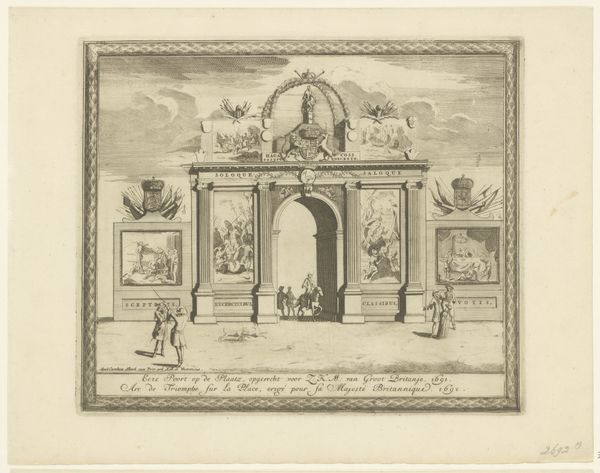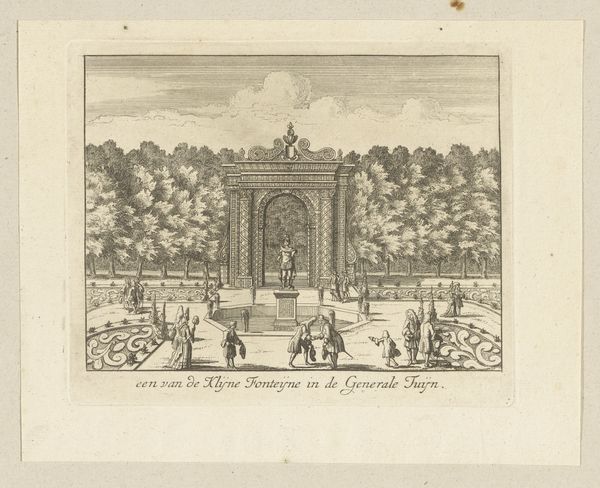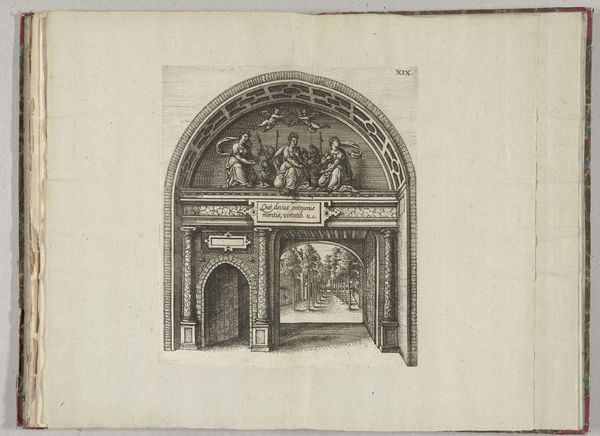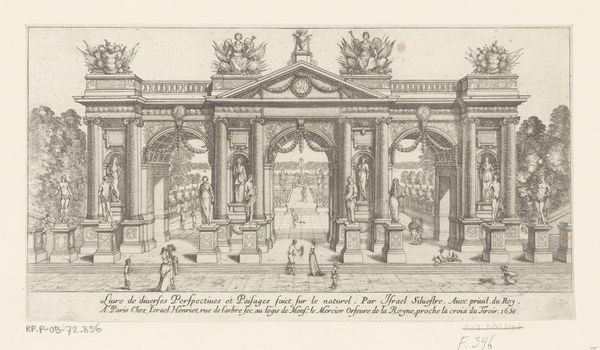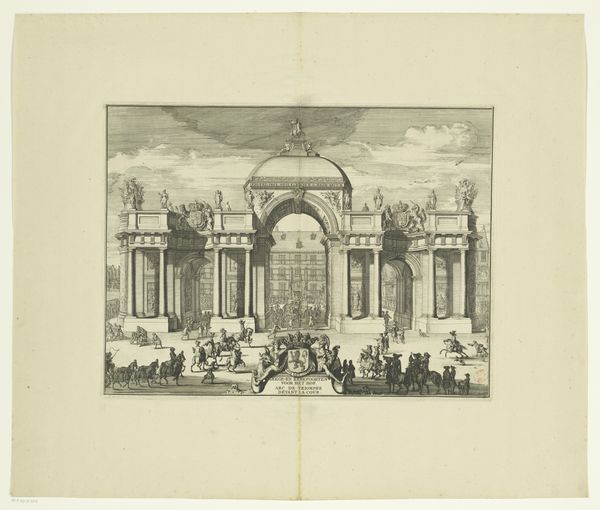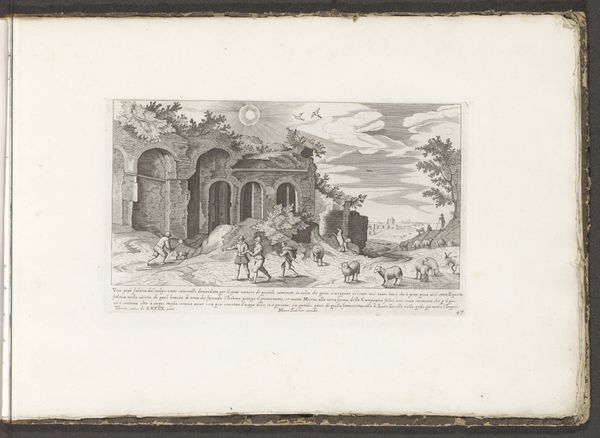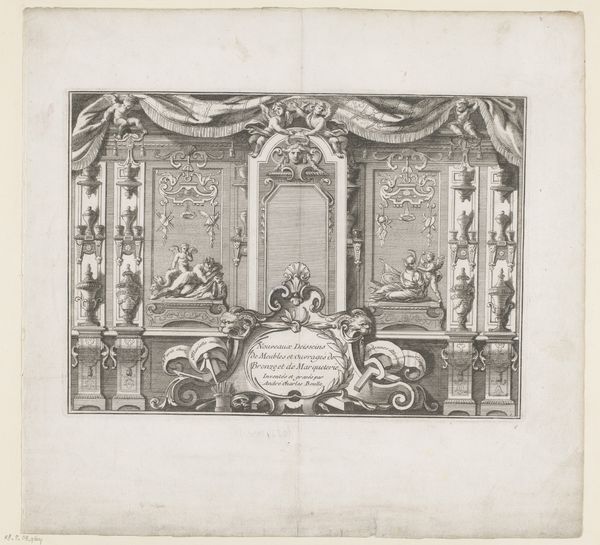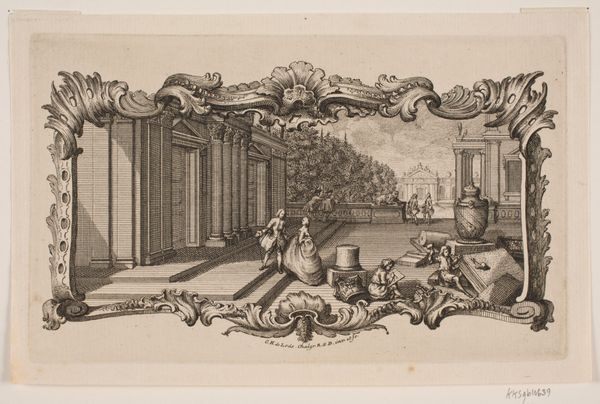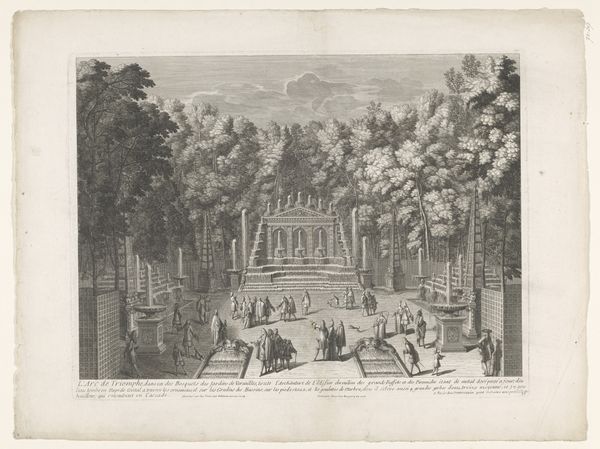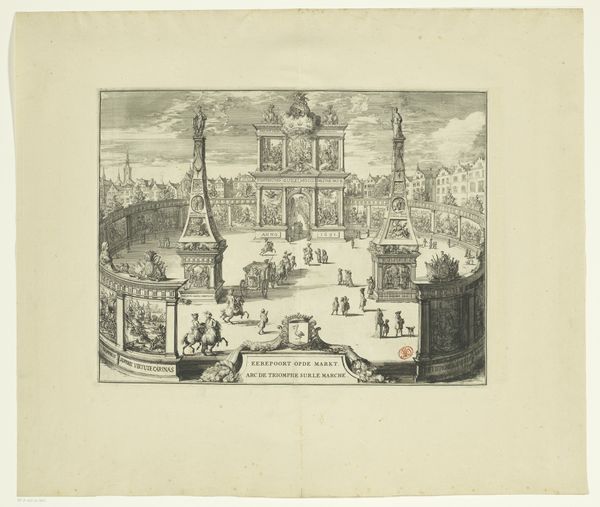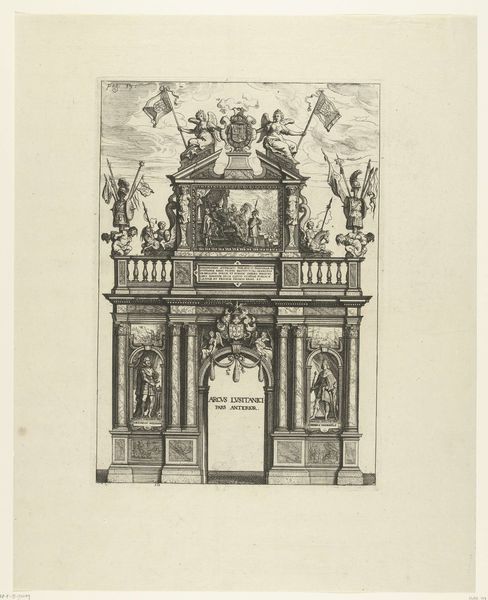
print, etching, engraving
#
narrative-art
#
baroque
# print
#
etching
#
etching
#
form
#
line
#
cityscape
#
history-painting
#
academic-art
#
engraving
Dimensions: height 332 mm, width 444 mm
Copyright: Rijks Museum: Open Domain
Curator: Standing before us is Romeyn de Hooghe’s "Triomfoog op de Plaats, 1691," an etching and engraving housed here at the Rijksmuseum. What are your initial impressions? Editor: My eye is immediately drawn to the overwhelming density of detail. The artist's use of line is remarkable, creating a complex and almost dizzying visual experience, a symphony of visual activity that feels so very Baroque. Curator: Indeed, this print is rife with allegorical representations celebrating political and military victories. De Hooghe, a controversial figure himself, often used his art as propaganda, embedding complex social and political commentaries within these meticulously rendered scenes. This arch, acting as a stage for power, emphasizes the performative aspect of triumph. Editor: I'm struck by the contrasting textures he achieves using only line. The smooth, polished surfaces of the architecture juxtapose beautifully with the frenetic energy of the depicted battle scenes. It's a masterclass in visual hierarchy and contrast, wouldn't you agree? The structure’s clear divisions lend themselves nicely to his ability to juxtapose narrative details. Curator: Absolutely. Think about how these visual choices relate to the work’s intended audience. It served not only as documentation but as an active participant in shaping public perception. It's fascinating to consider how class and social standing may impact the viewers and how their views might change the way that this triumph is internalized. Editor: The semiotic density of Baroque art never ceases to amaze. Even in its two-dimensional form, the artwork has clear weight through texture. Curator: Looking closer allows us to examine the role and power dynamics, specifically in the context of late 17th-century Europe, with the aristocratic on full display. Editor: Well, I, for one, will be thinking about the exquisite execution and deployment of line in the image for a long time to come. The artist's technique serves as a lens through which one can observe his masterful manipulation of pictorial space. Curator: Agreed. Exploring it through the sociopolitical sphere allows a deep appreciation of art's persuasive capabilities.
Comments
No comments
Be the first to comment and join the conversation on the ultimate creative platform.
